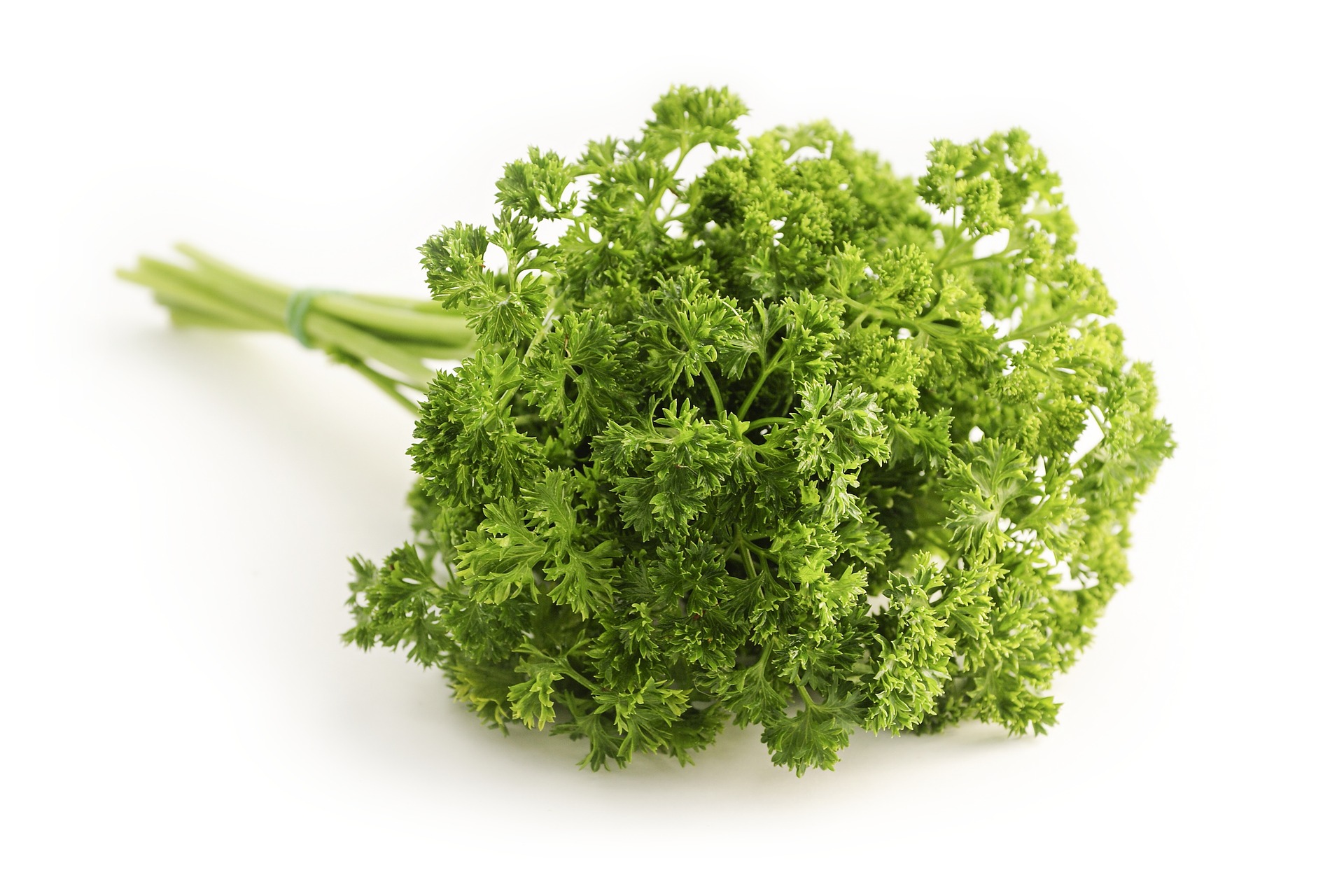Parsley is a staple of many Mediterranean and Italian dishes and has been used since the ancient Roman Empire. The leaf can be found in two varieties: curly and flat. The curly leaf parsley is softer and commonly added finely chopped to increase the visual appeal of a dish. Flat leaf parsley, on the other hand, has a stronger flavor, which makes it more ideal to be used as seasoning.
In addition to its various uses in cooking, parsley provides numerous health benefits including anti-carcinogenic (cancer fighting) properties, aiding in healing, increasing detoxification, and protecting the body’s organs.
Parsley’s anti-carcinogenic properties stem from its high levels of the flavonoid apigenin. A flavonoid is compound that provides color in plants. A study conducted by scientists at Korea University found that apigenin increased apoptosis, or programmed cell death, and suppressed the mitochondria (the “power house” of the cell) in cancer cells. Additionally, another study found that apigenin reduced the spread of cancer cells throughout the body by inhibiting their mobility. The results of the studies indicate that apigenin is an invaluable agent in preventing and impeding the growth of cancer cells.
Parsley, in addition, assists in healing of the body, especially after transplants. A 2012 study investigated the effects of the pre-transplant diet on recovery after the operation. The researchers found that those who had diets rich with parsley healed faster and were able to return to a normal diet earlier. Those with lower amounts of parsley in their diets ended up staying on an intravenous diet for a longer period of time.
Apigenin also protects the organs of the body by decreasing oxidative stress. Oxidative stress occurs when the body produces far more oxygen radicals than it can detoxify. Oxygen radicals damage proteins and lipids, and can lead to DNA damage. Oxidative stress can lead to neurodegenerative diseases, heart failure, pancreatitis, and many other disorders. A study published in Cambridge University Press found that parsley boosted production of erythrocyte glutathione reductase and superoxide dismutase, two key enzymes that detoxify oxygen radicals. Consequently, the subjects with increased parsley intake had less oxidative stress and lower damage to cells caused by free oxygen radicals.
This unassuming leaf, often served as decoration on dishes, contains many health benefits. In addition to being incredibly nutritious, parsley provides a variety of health benefits. So the next time you see parsley used to add color to a dish, give it a shot. It can help your body in many ways.
Feature Image Source: By tegrafik










